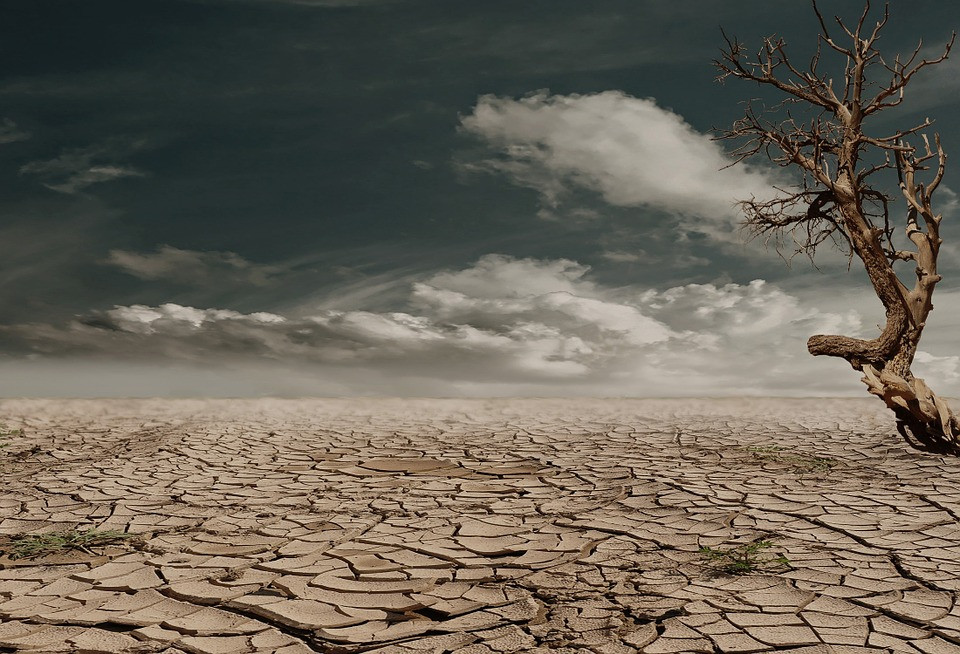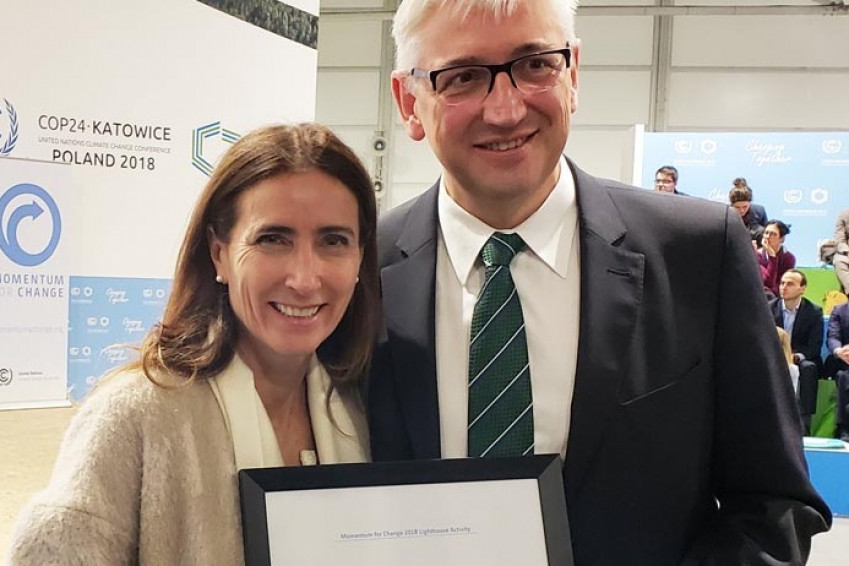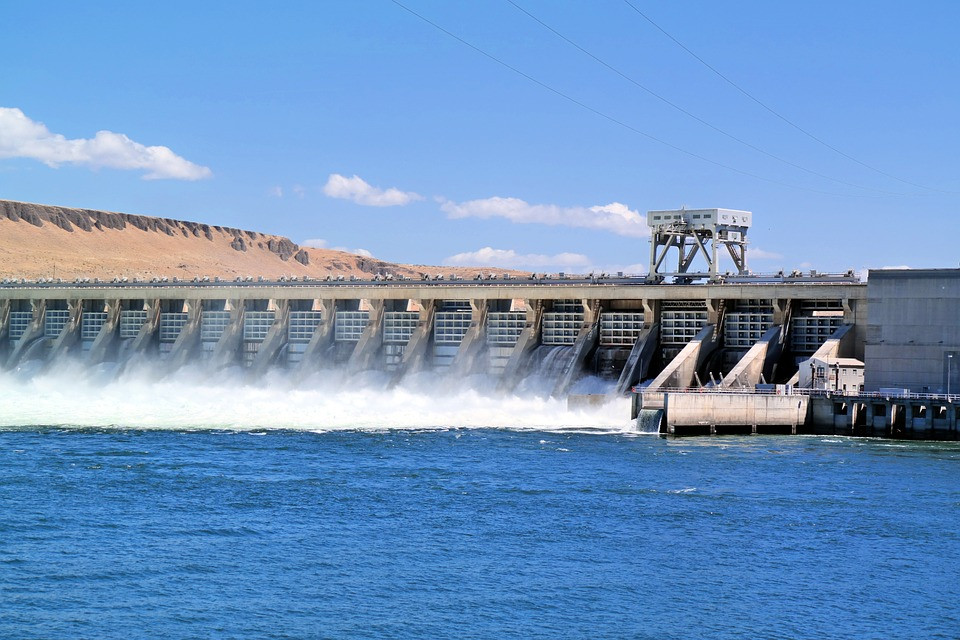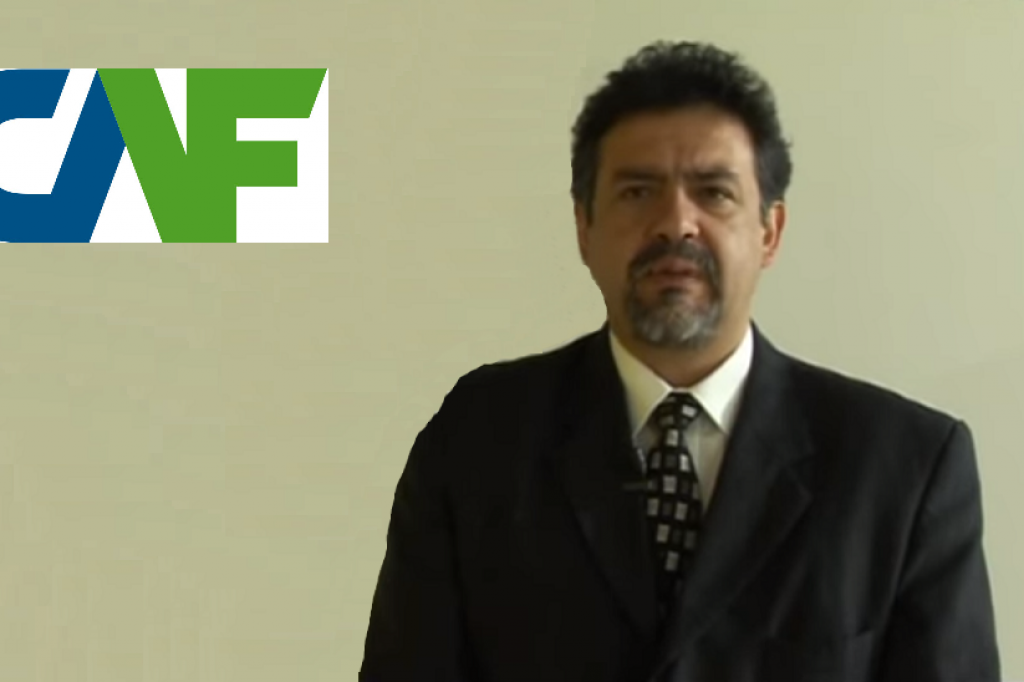
Water treatment companies and their contribution to confronting climate change in Chile
Jessica López
The effects of global warming on water availability were felt in Chile with particular intensity. We are suffering from a “mega drought” that has lasted for almost 10 years, and preliminary figures for the national water balance indicate that, from 1985 to date, availability has decreased by up to 37% in some areas.
In turn, models show that water scarcity events will be more frequent and recurring in the near future, together with the increased risk of disasters due to extreme precipitation events and high temperatures. The impact of climate change on water resources in Chile is increasingly visible, which confronts us as the main challenge: the adaptation to conditions of lower availability of water resources and a change in their patterns of distribution over time.
The urban water cycle in Chile presents different realities, taking into account the enormous geographical and climatic diversity of our land and its structural conditions (such as the Humboldt current, anti-cyclonal movements and orography). All these factors determine a high geographical variability in the availability of the resource. For our part, we found that in Chile, universal access to water and sanitation services is a reality. In other parts of the world this has not yet been achieved, which jeopardizes one of the objectives of the UN Sustainable Development Agenda towards 2030.
In Chile today, 95.7% of urban water industry users are served by private operators, while the remaining 4.3% corresponds to users of state concessionaires, municipalities or cooperatives. To supply drinking water to the more than 17 million people who live in Chile's cities -and that constitute 100% of the urban population, the Chilean urban water industry uses only 11% of the total water consumed in our country. However, this distribution varies at regional level, precisely as a result of its marked geographical diversity.
Today, considering the installed capacity of drinking water production, 52% corresponds to underground sources and 47% to surface sources. A smaller percentage (1%) comes from the sea and is desalinated.
At present, two desalination plants operate in the north of the country - Antofagasta and Taltal - that supply the drinking water consumption of the inhabitants of both cities and of Mejillones.
Emissions of greenhouse gases. Although we know that the relationship between water, energy and GHG (iii) is indisputable -since the intensity in the use of energy for operations and production processes will lead to a greater or lesser carbon footprint- from a first analysis we can conclude that GHGs emissions in this sector correspond mostly to indirect emissions associated with energy consumption. Indeed, we can identify different GHG-emitting operations, such as the extraction of groundwater, which requires approximately 30% more electrical energy than surface source production.
In the case of the distribution of drinking water, although the systems are designed to take advantage of the gravitational flow of the water, largest cities require pumping systems to maintain the service pressure in the network. This is even more valid for pumping sewage to treatment plants. In the latter case, sewage treatment systems based on activated sludge technology require a significant amount of energy for wastewater treatment. However, there are experiences that allow the use of biogas generated from sludge digestion processes for the generation of heat and energy.
CONTRIBUTIONS IN THE FIELD OF MITIGATION
Purification of treated wastewater. The main contribution of the urban water industry to climate change adaptation is expressed in that the coverage of wastewater treatment reaches almost 100% of collected wastewater. Thus, whereas we estimate that 80% of wastewater worldwide is discharged directly into bodies of water without any treatment whatsoever, which has serious detrimental impacts on ecosystems and human health, in Chile we have more than 294 sewage treatment systems distributed throughout the land. They are subjected to periodic checks, through which compliance is certified in the quality of their discharges to the environment, thus contributing to the recovery of aquatic ecosystems, coincidentally providing a service to the environment. For example, field analysis of recognized research centres such as the EULA (environmental sciences) of the University of Concepción, have confirmed the recovery of water quality of major rivers in the Maule and Biobio region, such as Mataquito, the Biobío and the Crosses.
As a result of the wastewater treatment processes of the urban population, the output water is free of pollutants and available to restore the environment to optimal conditions, or put to different uses.
Currently, we are studying new uses for this water, ranging from the aquifer recharge (pumped into underground layers), through environmental uses -such as irrigation of green areas in cities-, and even to become a future alternative to replace lack of water in severely water stressed areas.
Non-conventional renewable energy generation (ERNC). In different plants in Chile, the energy of anaerobic sludge digestion processes from the treatment plants of companies, such as Aguas Andinas (Biofactories of Greater Santiago and Talagante), ESSBIO (Gran Concepción), Aguas Araucanía (Temuco), is put to good use. ESSAL (Osorno), is a plant that can transform waste into energy through the generation of biogas. This, together with capturing methane (CH4) which is one of the GHG gases, and controlled combustion allows its calorific value to be used to generate energy.
In this regard, the biogas production of the water treatment sector in 2016 corresponded to 63 million cubic meters, 3.3% above what was produced in 2015 by these sewage treatment plants.
Another innovation aimed at the generation of NCRE is the company Enernuevas, a subsidiary of the Aguas Nuevas group that was achnowledged for its mini-hydro power plant project that takes advantage of the geographical height difference to use the water that drops as it passes through the pipeline from Alto Hospice to Iquique, managed by the company Aguas del Altiplano, for the generation of electricity. (v)
Each year our industry manages about 600,000 tons of stabilized (inert) sludge This is recovered from sewage, which is managed cleanly and safely for everyone, without the possibility of emitting unpleasant odours. The urban water industry has made significant efforts in terms of innovation, thus opening up other possibilities for the final disposal of biosolids, and also contributing to reducing impacts on communities.
As a result of these efforts, almost half of the environmental waste treated is reused as fertilizer in certain types of crops, or otherwise recovered due to their high nutrient concentration. Its expanding use in agriculture can bring additional benefits, by reducing the indiscriminate use of chemical products, which today constitutes a potential source of pollution in the different aquifers of the country. (vi)
The requirement for new investments. The magnitude of the adaptation challenge for Chile requires a public policy that ensures investments to provide drinking water for the entire population, not only today but also for future generations. Based on a long-term vision for the sanitation sector, which includes the level of urban health services that Chilean society wishes to have in the future, an improvement of the regulatory framework will be required, including the necessary incentives and stable rules of the game, to attract the required investment.
One of the most relevant elements is the investment plan that, for the next 20 years outlook, allows the adaptation to this new reality and the mitigation of the impacts we will face.
It will be essential to increase the level and pace of investments to ensure the output, and to maintain the quality, continuity and availability of water; and also to transform the sanitation industry into one that protects and contributes to the preservation of water ecosystems and the environment in general and, where, among other functions, treated wastewater is reused for different purposes.
Equally important is the urgency to make decisive progress in reducing the gaps between urban and rural areas of our country - improving the quality of life for about 2 million of the latter.
According to the projections made by the Association of Health Services Companies, Andess AG, and taking as a reference the estimated future population by the INE (one that will exceed 21 million inhabitants), it was estimated that investment in sanitary infrastructure that will be required in Chile for adaptation to climate change and mitigation of its effects is approximately US $10 thousand million in the next 20 years.
This is probably one of the great tasks that Chile has to address. The industry has the knowledge and experience, the technical and financial capabilities, and the willingness to undertake this task, within the framework of a public-private partnership policy based on a common ambition: adaptation to climate change.
------------------------------------------------------------------------------------------------------------------------------------------------------------------









